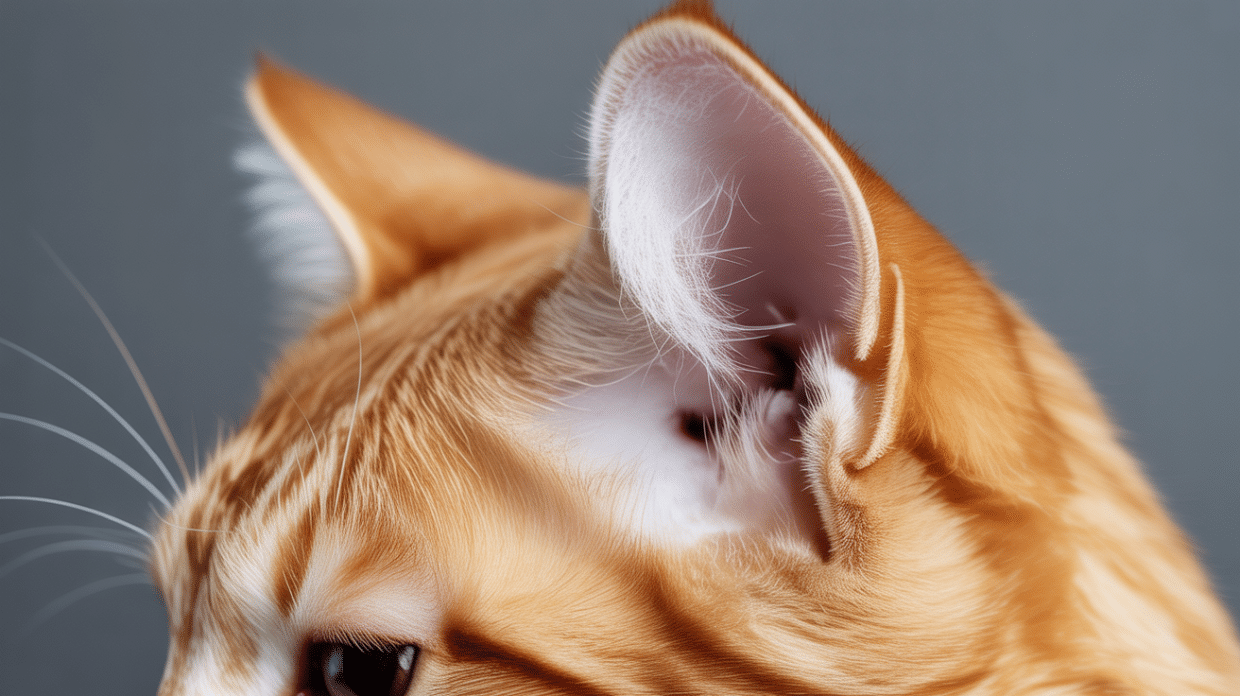Many cat owners wonder if their feline friend sheds tears when sad or upset.
The truth is that cats don’t cry emotional tears like humans do. While cats produce tears, these only keep their eyes healthy and clean, not to show feelings.
However, this doesn’t mean cats can’t express when they’re unhappy or in pain. They communicate their distress differently than we do.
Cats have unique ways of letting us know something’s wrong, from vocal sounds to body language signals. Understanding these signs is key to being a good cat owner.
Let’s look at how cats express their emotions and what to look for when your cat tries to tell you something important.
Do Cats Cry Like Humans?
Many pet owners have noticed their cat’s eyes looking watery or heard sounds that seem to be crying. This often leads them to wonder whether cats experience emotions and express them through tears as humans do.
Emotional Tears vs. Actual Crying
Cats have tear ducts that produce fluid to keep their eyes moist and clean. However, this is very different from the emotional tears humans shed.
When you see moisture around your cat’s eyes, it’s typically not because the cat is feeling sad or upset. Instead, it may signal an eye irritation, allergy, or infection.
Unlike humans, who might cry when sad, cats don’t connect their tear production with their emotional state.
If you notice excessive tearing, your cat might be dealing with a medical issue that requires attention.
Cats’ Vocalizations
When cats want to express distress, they rely heavily on vocal communication.
These sounds can include:
- Long, drawn-out meows that sound mournful
- High-pitched yowls that may seem like wailing
- Soft whimpers that differ from their everyday meowing
- Growls or hisses when feeling threatened or in pain
Regular meows tend to be shorter and conversational, while “crying” vocalizations are often more intense, longer, and have a different tone that signals distress.
Why Do Cats Cry?
When cats make sounds we interpret as crying, there’s always a reason. Understanding these causes can help cat owners better address their needs.
Emotional Causes
Cats can feel lonely when left alone for too long. They may miss human company.
Some cats become anxious during changes in their homes. A new pet or baby can upset them, and moving to a new house can cause stress.
Cats also feel sad. They can mourn when a family member or animal friend is gone, and these feelings make them cry out.
Their sounds show how they feel inside. Pay attention to when your cat makes these sounds. The timing may tell you what’s wrong.
Physical Causes
Many times, a cat’s crying has a physical cause:
- Pain from an injury, arthritis, or internal issue
- Hunger, especially if meals are delayed
- Discomfort from hairballs, constipation, or urinary issues
- Thirst or inability to access water
Some health conditions can also cause increased vocalization, including:
- Thyroid problems, which can make cats more vocal
- Cognitive decline in older cats, leading to confusion and calling out
- Neurological issues that affect their behavior and communication
- Infections or illnesses that cause general discomfort
Attention-Seeking Behavior
Cats are smart. They learn what works to get what they want. If crying gets your attention once, they’ll do it again.
Some cats cry for different reasons, such as when they’re hungry, want playtime, need to be let into a room, or want attention and petting.
Cats are skilled at training humans by observing their reactions. If you consistently respond to their cries, they will learn that it gets them what they want, leading to more frequent crying.
This doesn’t mean you should ignore them. Just be aware that they might be using sound to control you. Try to tell the difference between true needs and simple wants.
How Can I Tell If My Cat Is in Distress?
Cats communicate their feelings in many ways beyond just making sounds. Learning to spot the signs of distress can help you address problems early.
Cats show stress through clear physical signs:
- Watch for ears that lie flat against the head. This signals fear or pain.
- A cat that stops eating may feel sick.
- Some cats groom too much when stressed.
- Hiding more than usual suggests your cat feels unsafe.
When these signs appear with crying sounds, your cat likely needs help. Changes in bathroom habits or movement can also indicate problems.
Pay attention to what’s normal for your cat so you can spot changes quickly.
Understanding Your Cat’s Body Language
Your cat’s body tells a story about how they feel:
- A tucked tail means fear or worry.
- Wide eyes with large pupils can signal stress.
- Slow blinking shows trust and comfort.
- A tight, hunched position often means pain.
- Forward-facing whiskers show interest, while whiskers pulled back indicate fear.
By watching these signals and your cat’s sounds, you can better understand what they need from you.
What Should You Do If Your Cat Is Crying?
When your cat makes crying sounds, it’s important to respond in a way that meets their needs. The right approach depends on what’s causing the behavior.
1. Respond to Emotional Crying
If your cat seems upset emotionally, give it gentle attention, speak in a soft voice to calm it, and offer gentle pets if it wants to be touched.
Some cats prefer their own space when upset. Keep routines steady. Cats feel better with regular meal times and play sessions, and extra play can help reduce their stress.
2. Address Physical Discomfort
Take your cat to the vet if it shows pain and is crying. These include not eating, hiding, limping, or changing bathroom habits.
Check for basic needs first. Ensure they have fresh water, clean food, and a litter box.
3. Manage Crying Due to Attention Seeking Behaviour
For cats who cry to get attention, wait until they quiet down before giving attention or treats.
Set up regular play times so your cat knows when to expect attention. Leave toys out for self-play when you’re busy. Puzzle feeders can keep them busy between meal times.
Can Crying Be a Sign of a Larger Health Issue?
When a cat cries often, it might signal something more serious than just wanting attention. Knowing when these sounds point to health problems can help you get your cat the necessary care.
Possible Medical Concerns
Cats may cry due to pain from health issues like dental problems, arthritis, or urinary tract infections. Older cats might cry from joint pain or brain issues.
Hearing loss can also cause louder crying. A vet should check for any sudden increase in vocalization.
When to Seek Veterinary Help
- Your cat cries while using the litter box
- Crying is paired with limping or trouble jumping
- Your cat cries when touched in certain areas
- Crying happens with changes in eating or drinking
- Your cat cries and paws at their face or mouth
- Your previously quiet cat becomes very vocal
- The crying behavior lasts more than 24-48 hours
Do Cats Cry for Their Owners?
Many cat owners wonder if their pets can sense and respond to their feelings. The bond between cats and humans goes beyond just sharing a home.
Emotional Connection Between Cats and Their Owners
Cats can pick up on human emotions. They notice changes in your voice, face, and smell when you’re upset. Some cats become more gentle or stay close to sad owners, while others might make more sounds when their owner is crying.
Studies show that cats can form strong bonds with their owners and may become stressed when their favorite person is gone.
Some cats show clear signs of missing specific people. While they don’t shed tears for us, they show they care in their feline ways.
Spiritual and Superstitious Views
In some cultures, a cat’s crying at night has a special meaning. Some believe it warns of bad luck coming. Others think cats can see spirits or sense danger before humans can.
In Japan, some stories say cats cry when they see a person’s death approaching. These beliefs come from the cat’s keen senses and behaviors that people couldn’t explain long ago.
Conclusion
Understanding why your cat cries helps you take better care of them. While cats don’t shed emotional tears like humans, they use vocalizations and body language to tell us what they need.
By paying attention to these signals, you can tell if your cat is seeking attention or if something more serious is happening.
Learning your cat’s normal behavior is key to noticing changes quickly, which helps you respond to their needs. This knowledge builds a stronger bond and ensures your cat stays healthy and happy.
For more helpful pet care tips, check out our other blogs on the website.








